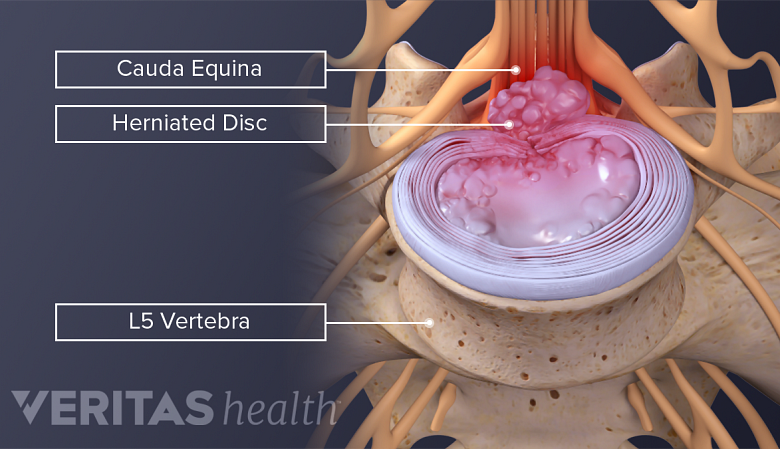When diagnosing a lower back condition, chiropractors analyze the patient’s symptoms, signs, and medical history.
Chiropractors use the categories described below to classify the condition and aid in diagnosis.
In This Article:
Categories of Chiropractic Diagnosis
In chiropractic diagnosis, cauda equina is categorized as a potentially serious condition.
In the assessment of lower back pain, differential diagnosis utilizing a "triage" concept of classifying low back injuries into one of three categories helps to guide the doctor of chiropractic. These categories of chiropractic diagnosis include:
- Potentially serious condition: tumor, infection, fracture, major neurological problem (cauda equina), local open wound or burn, prolonged bleeding (hemophilia), artificial joint implant problems, pacemaker problems, joint infection
- Nerve problem: when the nerve root in the low back is pinched or compressed, causing a radiculopathy (sciatica). Typical causes of nerve root pinching include a lumbar herniated disc, spondylolisthesis, spinal stenosis
- Non-specific condition: mechanical back pain in the lumbar spine. This type of lower back pain is the most common presentation, and includes pain for which there is no identifiable cause.
With chiropractic diagnosis of potentially serious injuries, the chiropractor will typically refer the patient to a relevant medical specialist and possibly a surgeon, and as appropriate the chiropractor may co-manage the patient's care with other back pain specialists. 1 Globe G, Morris C, Whalen W, et al., "Chiropractic Management of Low Back Disorders: Report from a Consensus Process," Journal of Manipulative and Physiological Therapeutics November/December 2008: 651-658. With this classification, chiropractic manipulation is typically avoided over the relevant anatomy.
See Special Considerations for a Neck or Back Pain Diagnosis
Categories of Sciatica Symptoms
Sciatica pain for 12 weeks or more is categorized as chronic pain.
With chiropractic diagnosis of a nerve root problem causing sciatica and/or non-specific causes of low back pain, chiropractors typically describe the symptoms experienced on the following scale:
- Acute (symptoms lasting less than 6 weeks)
- Subacute (symptoms lasting between 6 and 12 weeks)
- Chronic (symptoms lasting for 12 weeks or more)
- Recurrent/flare up (symptoms are similar to original symptoms and return sporadically or as result of exacerbating circumstances). 1 Globe G, Morris C, Whalen W, et al., "Chiropractic Management of Low Back Disorders: Report from a Consensus Process," Journal of Manipulative and Physiological Therapeutics November/December 2008: 651-658.
These lower back pain or sciatica symptoms may be further broken down as mild, moderate or severe in pain.
- 1 Globe G, Morris C, Whalen W, et al., "Chiropractic Management of Low Back Disorders: Report from a Consensus Process," Journal of Manipulative and Physiological Therapeutics November/December 2008: 651-658.











